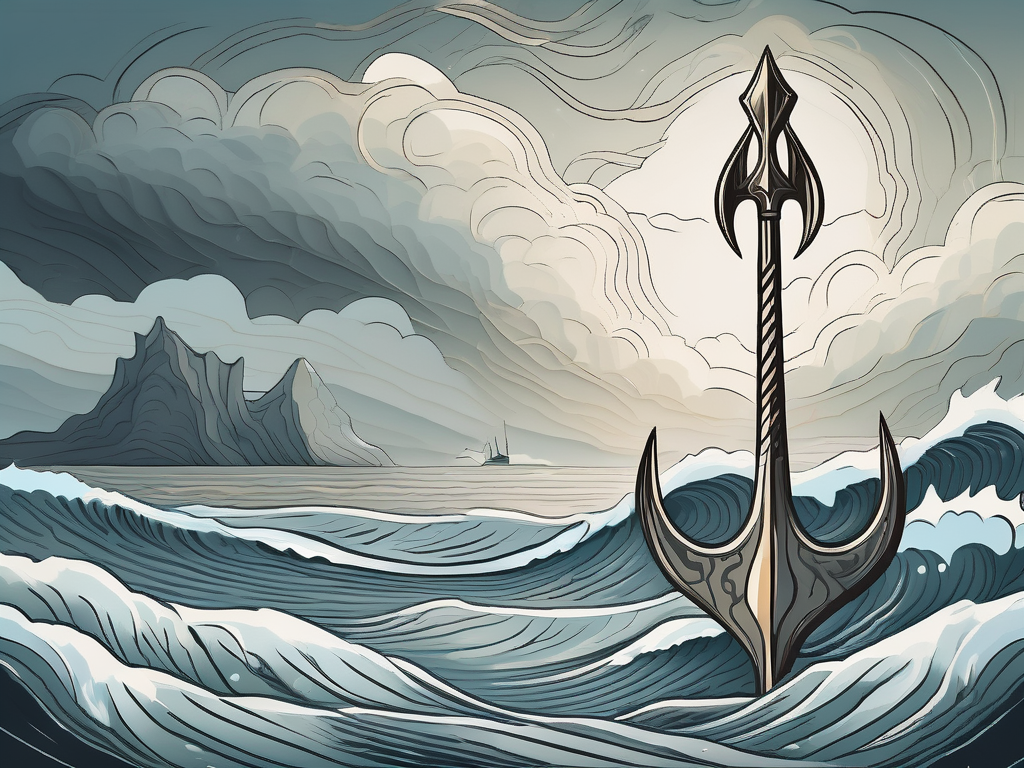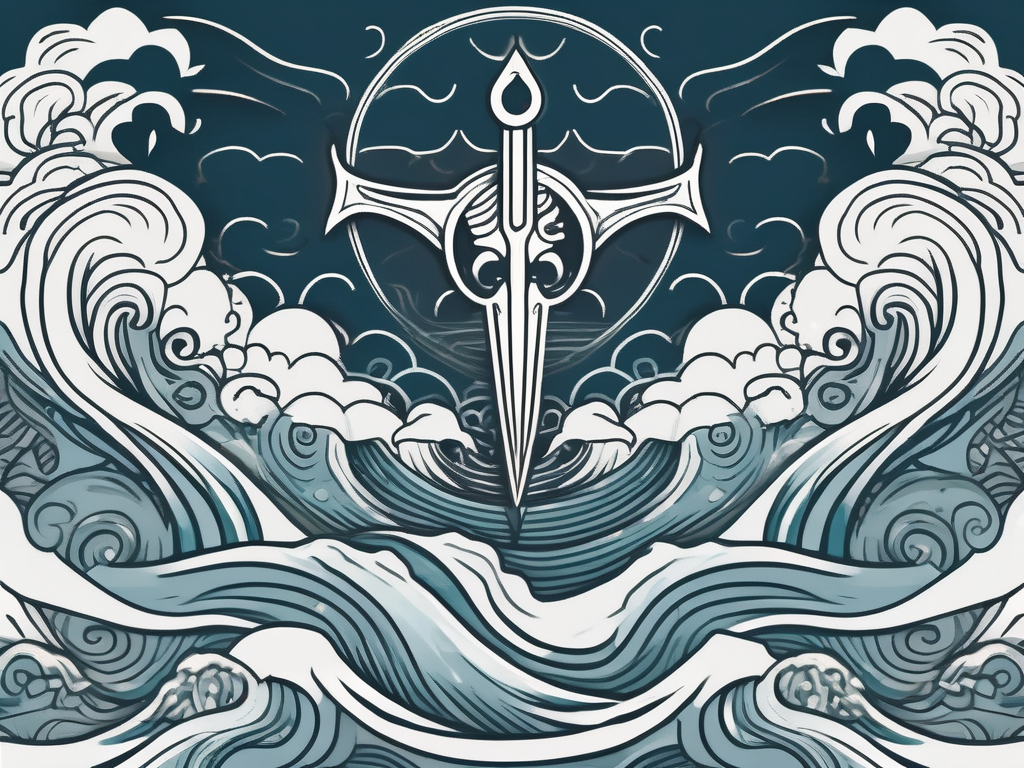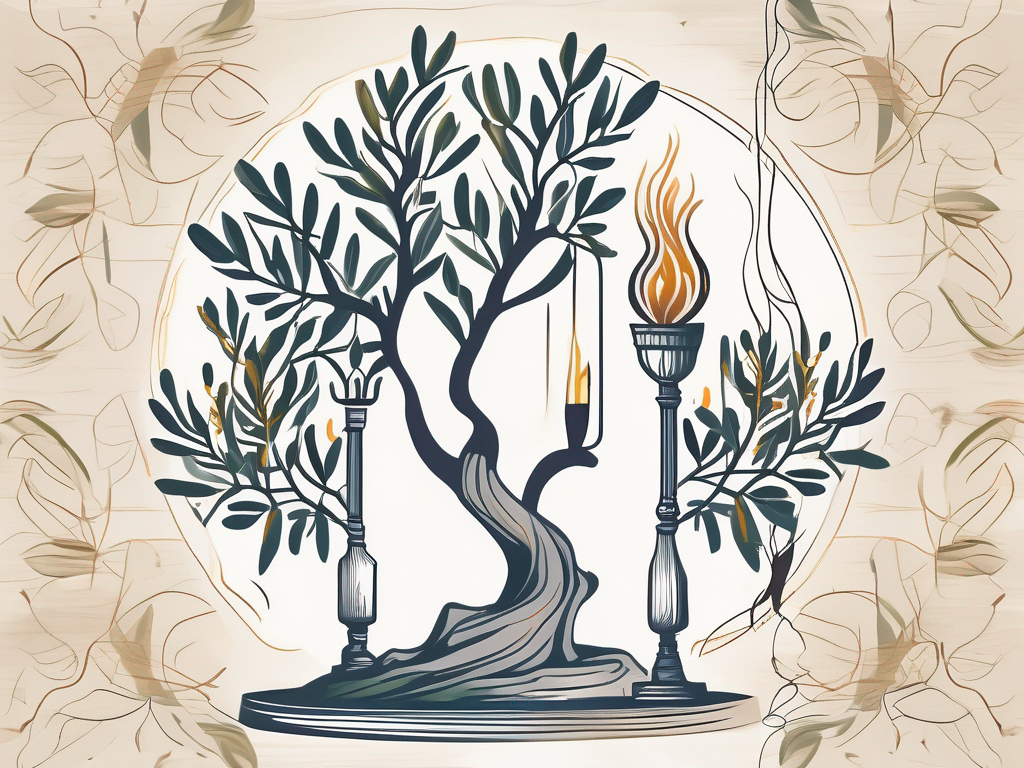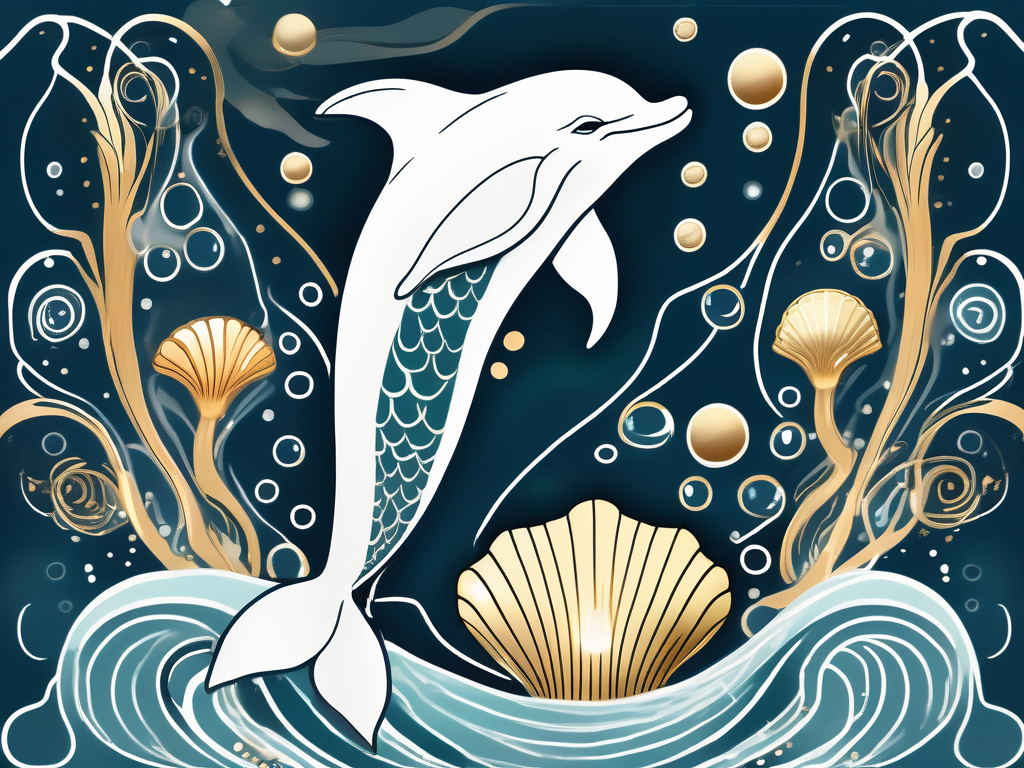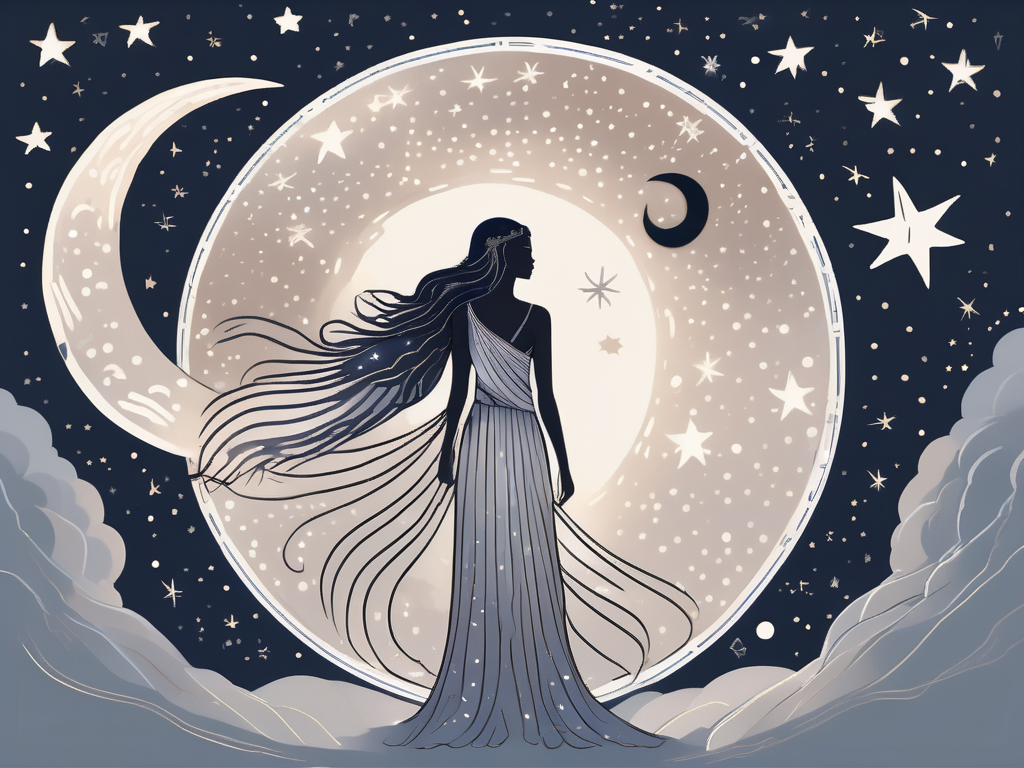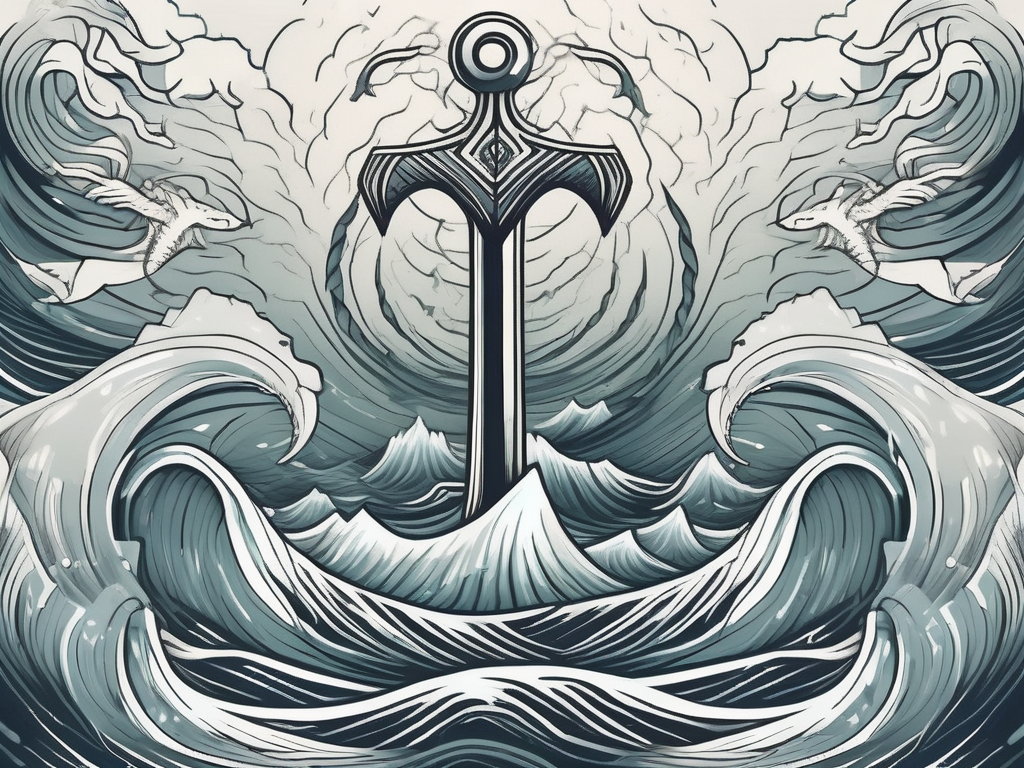In the rich tapestry of Norse mythology, the role of deities is an intriguing aspect that captures the imagination. These gods and goddesses serve as powerful beings who hold sway over different aspects of the world. Among them, the goddesses of the sea stand out, with their enigmatic allure and profound influence on Norse culture. Rán, the goddess of the sea, is a fascinating figure shrouded in mystery and symbolism. Let’s delve into the depths of her story and unravel the secrets she holds.
Understanding the Role of Deities in Norse Mythology
In Norse mythology, the pantheon is a bustling collection of gods and goddesses, each with their own unique responsibilities and domains. These deities are integral to the fabric of Norse society, playing roles that encompass everything from creation to destruction and everything in between. They embody the natural elements, societal values, and the collective consciousness of the Norse people.
The gods and goddesses of Norse mythology are complex characters, reflecting the intricate web of relationships woven within their pantheon. They are not mere celestial beings but figures deeply intertwined with the lives of the mortals. The deities in Norse mythology often mirror human emotions, desires, and frailties, making them relatable and captivating figures in stories passed down through generations.
The Pantheon of Norse Gods and Goddesses
The Norse pantheon is a vibrant mix of gods and goddesses, each with their own distinct personalities and associations. Odin, the mighty Allfather, rules over Asgard, the realm of the gods. Thor, the god of thunder, wields his hammer Mjolnir to protect both the gods and humans from their adversaries. Freya, the goddess of love and beauty, brings joy and fertility wherever she goes.
Amidst this extraordinary assembly of deities, the goddess Rán rules over the tumultuous seas, commanding their power and mystery.
The Importance of the Sea in Norse Culture
The sea had a profound significance in Norse culture, shaping the lives of the Norse people who depended on its abundance and feared its wrath. As seafarers and traders, the Vikings traversed vast oceans, encountering the might of the sea firsthand. To them, the sea was both a source of life and a force of chaos.
Within this context, Rán, the goddess of the sea, held a special place in Norse mythology. She embodied the unpredictable nature of the vast oceans, embodying their ferocity and their generous bounty.
Legend has it that Rán was a formidable figure, with a commanding presence that mirrored the immense power of the sea itself. She was often depicted as a fierce and beautiful goddess, with flowing hair that resembled the crashing waves and eyes that sparkled like the sun reflecting off the water’s surface. Her voice was said to be as powerful as a storm, capable of summoning the winds and stirring the waves into a frenzy.
Rán’s role in Norse mythology extended beyond her dominion over the seas. She was also associated with the concept of fate and the inevitability of death. It was believed that Rán would collect the souls of those who perished at sea, guiding them to the afterlife in her underwater realm. This association with death further emphasized the dual nature of the sea – a source of life and prosperity, but also a realm of danger and uncertainty.
As the goddess of the sea, Rán was revered and feared by the Norse people. They would offer prayers and sacrifices to appease her, seeking her protection during their voyages and hoping for her favor in their endeavors. Sailors would often wear amulets or carry small tokens depicting Rán, believing that these would bring them luck and safeguard them from the perils of the sea.
Stories and myths about Rán were passed down through generations, captivating listeners with tales of her power and influence. These stories served as cautionary tales, reminding the Norse people of the unpredictable and treacherous nature of the sea. They also celebrated the strength and resilience of those who dared to venture into the unknown, facing the challenges and dangers that awaited them.
In conclusion, the role of deities in Norse mythology, such as Rán, goes beyond their divine status. They are complex characters that reflect the values, fears, and aspirations of the Norse people. Rán, as the goddess of the sea, embodies the dual nature of the ocean – a source of life and prosperity, but also a realm of danger and uncertainty. Her presence in Norse mythology serves as a reminder of the profound impact the sea had on the lives of the Norse people and their deep respect for its power.
The Enigmatic Goddess of the Sea: Rán
Rán, with her enigmatic aura and captivating presence, breathes life into the tales of the sea. Stories of her exploits and influence continue to fascinate and inspire to this day.
The Mythology Surrounding Rán
According to Norse mythology, Rán was married to Ægir, the god of the sea. Together, they ruled over the vast expanse of the oceans, governing everything from the tides to the creatures that inhabited its depths. In many tales, Rán is depicted as a fierce and powerful goddess, known for her tempestuous nature and her penchant for capturing sailors in her net, dragging them into the depths of the sea. In these stories, she represents both the dangers and the allure of the ocean.
Rán’s Powers and Symbolism
Rán’s powers are closely intertwined with the elemental forces of the sea. She can summon storms with a flick of her hand, stir the waves to towering heights, and beckon the creatures of the deep to do her bidding. Her net, said to be made of lives lost at sea, symbolizes her hold over those who venture into her realm.
Symbolically, Rán reflects the capricious nature of the sea, embodying its beauty, its treachery, and its power. She serves as a reminder of the delicate balance between life and death, enticing sailors with visions of riches and adventure, yet ready to claim them if they dare to test her waters.
Rán’s Influence on Norse Society
The influence of Rán stretched far beyond mythology, leaving an indelible mark on Norse society.
Worship and Rituals Dedicated to Rán
Rán was worshiped and honored by seafaring communities who sought her favor and protection before embarking on their journeys. Sailors would make offerings and perform rituals, hoping to appease the goddess and secure smooth seas and abundant catches.
These rituals ranged from simple acts of pouring libations into the sea to elaborate ceremonies involving prayers and sacrifices. Such worship reflected the profound respect and fear the Norse people held for the relentless power of the ocean and their desire for a safe voyage.
Rán’s Role in Literature and Folklore
Rán’s presence can be felt throughout Norse literature and folklore, where she weaves her magic into captivating tales. Her stories, passed down orally, spoke of her encounters with heroes and her relentless pursuit of those who dared to challenge her domain.
Her depiction in poems and sagas helped to shape the perception of the sea in Norse culture. Rán became a symbol of the wild and untamed forces of nature, reminding the Norse people of the dangers that lay beyond their shores.
Comparing Rán to Other Sea Deities
Rán’s enigmatic character invites comparisons to other sea deities in different mythologies, illuminating both similarities and differences in their portrayal.
Rán and Greek Goddess Amphitrite: A Comparison
Both Rán and the Greek goddess Amphitrite hold dominion over the sea. While Rán embodies the tempestuous nature of the ocean, Amphitrite personifies its tranquil and benevolent aspects. Their contrasting portrayals reflect the distinct cultural perspectives on the sea in Norse and Greek mythology.
Similarities and Differences with Other Sea Goddesses
Rán shares similarities with other sea goddesses found in various mythologies around the world. From the vengeful sea spirits of Japanese mythology to the protective mermaids of folklore, these goddesses embody the power and mystery of the sea. Although their names and stories may differ, the essence of their roles and symbolism remains remarkably consistent.
The Modern Perception of Rán
Rán’s enduring legacy evolved through time, leaving its mark on modern culture and media.
Rán in Contemporary Media
The appeal of Rán’s character extends beyond the tales of old, finding new life in contemporary media. From novels to movies and video games, her captivating persona continues to captivate audiences worldwide. Her allure has sparked the imagination of writers, directors, and artists, ensuring that her legend lives on.
The Enduring Legacy of the Sea Goddess
Rán, with her intriguing portrayal, holds a timeless charm that transcends generations. Her representation in art, literature, and popular culture serves as a reminder of the power of the sea and the captivating allure of the divine. As long as the sea continues to captivate the human spirit, Rán’s legacy will continue to inspire and mystify.
In conclusion, the goddess Rán occupies a significant place in Norse mythology and culture. Her enigmatic presence as the goddess of the sea intertwines with the lives and experiences of the Norse people. With her allure, power, and symbolism, Rán serves as a fascinating figure, unveiling the mysteries of the oceanic deity and leaving an enduring legacy that lingers in the hearts and minds of those captivated by her tales.
